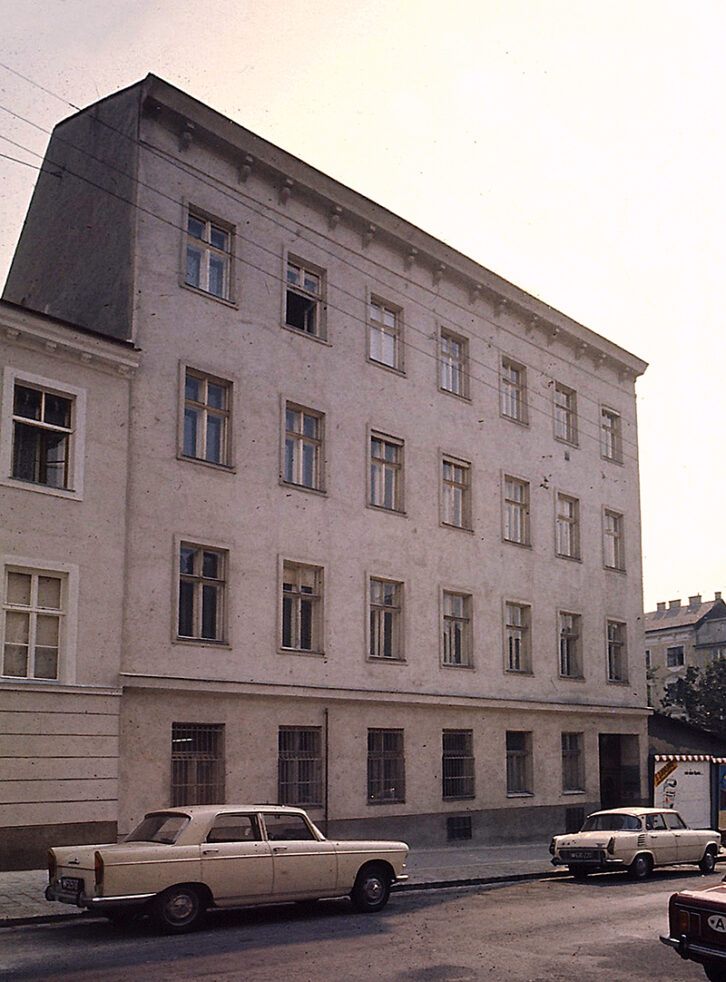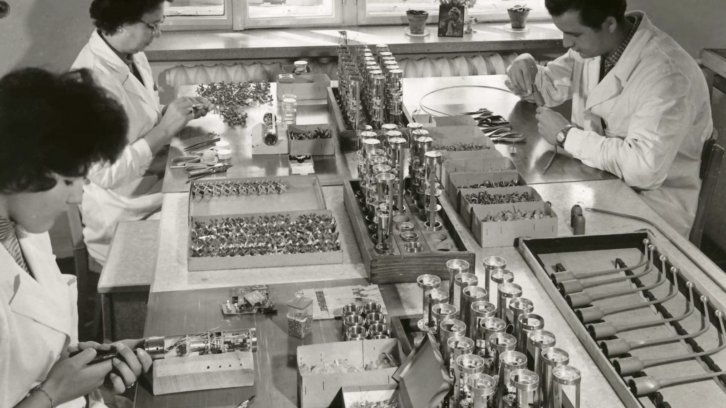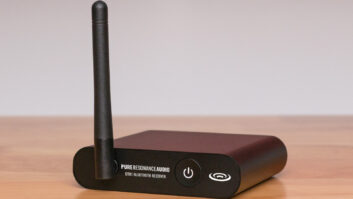
PHOTO: Courtesy of AKG
Over the past 75 years, AKG has developed thousands of products, from loudspeakers to phonograph cartridges, but the company remains best known for its microphones, which have captured some of music’s most iconic voices, from Frank Sinatra to David Bowie to Kanye West. AKG mics were integral to The Beatles’ watershed 1965 Shea Stadium show, and AKG technologies went into orbit onboard the MIR space station. The company has come a long way from a pair of inventors building movie equipment by hand in a basement in Austria.
AKG, originally known as Photophon, was founded in 1947 by physicist Rudolf Görike and engineer Ernst Pless, old friends who became reacquainted after WWII. In battle-scarred Vienna, movies were the most popular entertainment, but most of the city’s cinemas were ransacked or destroyed, and it was nearly impossible to replace damaged projection systems.
Görike and Pless, along with a core team of five employees, set out to supply Vienna’s movie theaters with film projectors and loudspeakers, modifying projectors purchased from a closed factory and building horn-loaded loudspeakers with cardboard diaphragms, delivering products on bicycles and in wheelbarrows, and taking payment in butter, meat and cigarettes.
In the beginning, the company sold an enormous range of products, including exposure meters, car horns, intercoms, telephone handset capsules and cushion speakers, which were trendy at the time. Within a couple of years, it turned its attention to microphones, introducing the DYN Series, its first dynamic microphones for vocals and instruments, and the C1, its first condenser tube microphone. In 1949, AKG introduced its first headphone model, the K120 DYN.
AKG initiated a series of microphone break-throughs in the 1950s: The company pioneered the development of moving-coil transducer technology and mass-loaded diaphragms, which extended frequency range and eliminated the shrillness inherent in earlier mic designs. The first product to feature the new technology was the D12, billed as the world’s first single-diaphragm dynamic cardioid microphone. The D12 set a new sonic standard for voice transmission and was quickly adopted by radio stations, recording studios and movie productions around the world.
In 1953, AKG introduced the legendary C12, the world’s first large-diaphragm, remote-controlled, multi-pattern condenser microphone; its foundation, the CK12 capsule, was the first to exhibit constant frequency response and sensitivity for all polar patterns (omni to figure eight). The C12 was designed for commission by RAVAG, the Austrian national radio network. “They were looking for a microphone ‘as thin as a pen,’” designer Konrad Wolf said at the time. “Nobody was able to make that … but in any case, we came up with a slender, cylindrical shape for the C12.”
The C12 led to the C24 stereo mic, the C412, the C414, and more than a dozen 414 variations, along with versions for Siemens and Telefunken, including the Telefunken Ela M 250 and M 251.

By the mid-1960s, AKG was well-established in the music industry, and in 1970, after nine years of development, it introduced the BX20, the world’s first portable studio reverb. The unit featured helix springs with long time delays that closely mimicked the reverb characteristics of large concert halls. Vintage BX20s are still sought after today.
In the 1970s and 1980s, the company continued pioneering headphone technologies, introducing the K340, the world’s first hybrid dynamic/electrostatic headphones; K1000 open-baffle headphones for binaural listening; and Libero wireless headphones, which used infrared light to transmit audio signals. (The futuristic device was met with suspicion by consumers and was ultimately withdrawn.)
After Harman acquired AKG in 1994, the company focused more on core products: microphones and headphones. In 2010, AKG received a Technical Grammy Award for its “contributions to the art and science of music recording and performance through innovation and excellence in product design.”
Over the past two decades, as digital recording technologies exploded, AKG has evolved to serve the needs of modern content creators, producing a range of wireless microphone systems, Bluetooth headphones, and USB microphones. Legions of podcasters have become fans.
Looking forward, the company aims to continue delivering tools that take advantage of the newest technologies and platforms, says Philip Feinman, AKG’s global product line manager: “Whether it’s using some of the newest immersive audio technologies or creating unique ways of capturing sources, AKG is committed to making innovative, high-quality products that will help inspire artists and make life sound better.”







